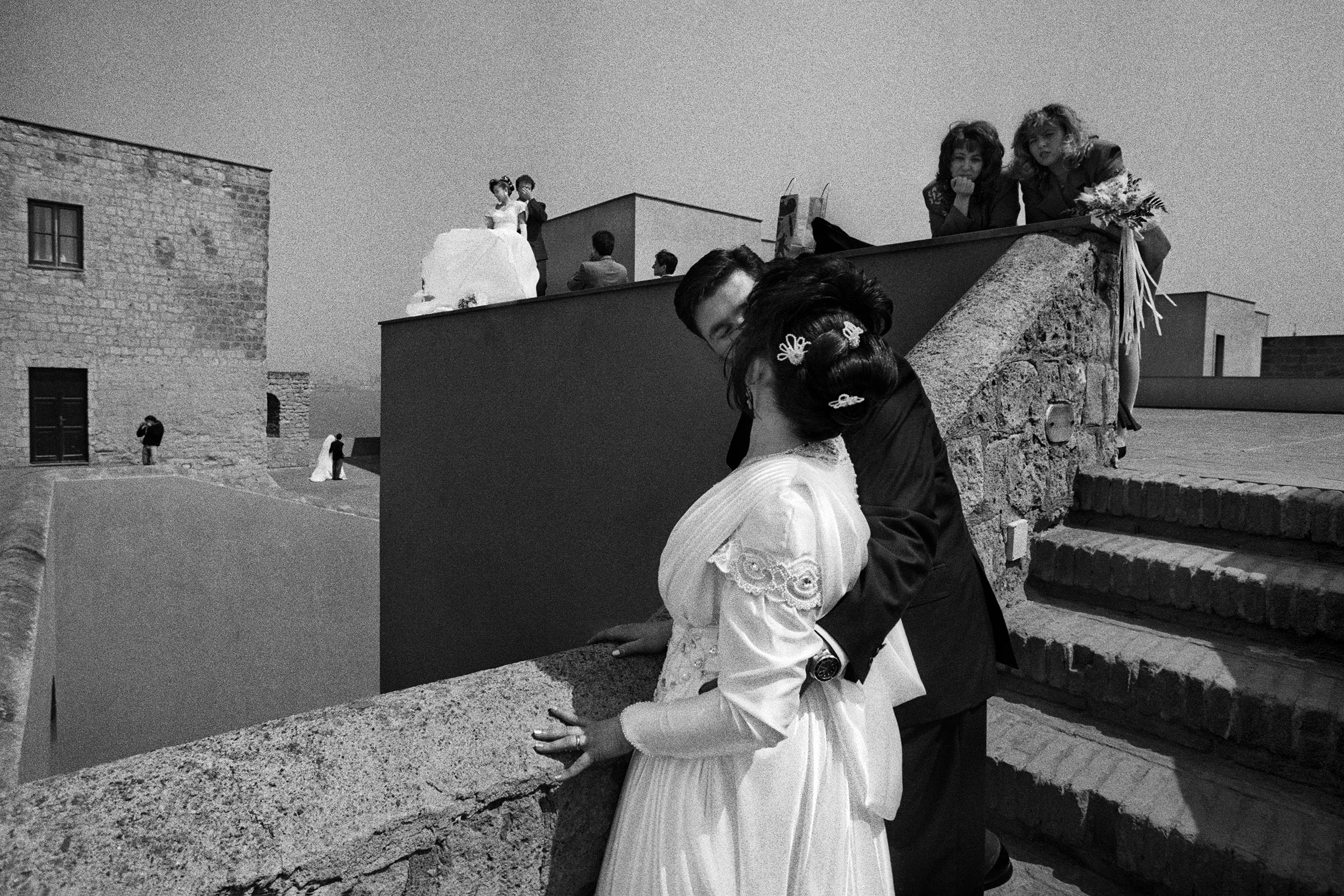
Francesco Cito
Neapolitan Wedding
Location: Palazzo Guinigi, Via Guinigi, 29
Opening days and hours:
Monday – Thursday from 15:00 to 19:00
Friday – Sunday from 10:00 to 19:00
It was 19 September, the feast of San Gennaro in Naples, and I was busy doing a story on street children for the weekly Epoca.
Through the taxi window I glimpsed a scene from a film set. A circle of image operators, the wedding photographer, his assistants and a video operator. The strutting newlywed couple and their retinue of friends and relatives appeared like puppets between photo shoots. Brilliant I thought. I watched the scene in admiration. Brilliant in knowing how to sell on the most beautiful day, all the illusion of celebrity. What bride would not want to imitate Lady Diana on the day of her fairy tale wedding celebration? A glance of understanding with the photographer, who grants his approval for me to become an integral part of the scene. The castle, not accessible to the public, had been a military base until recently. A small fee and the caretaker would let the bride and groom and their entourage pass through. In Naples, one does not get married on Sundays, the curia forbids it. ‘There would be no time for religious services,’ the driver informs me. So I find out that in the city of “Marriage Italian Style,” based on Eduardo De Filippo’s famous drama “Filumena Marturano,” people get married every day of the week, by labor categories. On Mondays barbers and hairdressers, being their day of lock-out. On Wednesdays butchers, then foodstuffs at rest. On Saturdays clerks and the working class. Every day of the week those who have no declared activity, including camorrists. There are also secular feast days, such as 25 April or 1 May, 2 June, etc. on which all categories marry. Having understood the ceremonial dynamics, I considered that it could be a story to be told, a story in images, a story in which Neapolitan theatre is staged, a story in which, through the wedding dress, the social realities of a city stratified upon itself during its two thousand and nine hundred years of history could be told. A city founded even before the furrow of Rome was traced.
BIOGRAPHY
Francesco Cito was born in Naples on 5 May 1949. He moved to London in 1972 to devote himself to photography. In 1980, he was one of the first photojournalists to clandestinely reach Red Army-occupied Afghanistan. He followed the events until 1989 as a reporter for Venerdì di Repubblica. In 1982 – 83, he produced a reportage on the Camorra in Naples, which was published by major national and foreign newspapers. In 1978, for The Sunday Times magazine, he had realised a reportage on cigarette smuggling from inside the smuggling organisation. He followed the various phases of the Lebanese civil war from 1983 until 1989. From 1984 he devoted himself to the conditions of the Palestinian people inside the occupied territories of the West Bank (West Bank) and the Gaza Strip. In 1994 he made a reportage on extremist Israeli settlers for the German weekly Stern, and in April 2002, he witnessed the Israeli siege of Palestinian cities, and the destruction of the Jenin refugee camp. In 1995, the World Press Photo awarded him the prize for the ‘Neapolitan Wedding story’. In Italy he often covers mafia cases, but also events such as the Palio di Siena, which earned him first prize at the 1996 World Press Photo, and other relevant aspects of contemporary society.
Since 1997, his focus has been on Sardinia outside the tourist routes, already partly encapsulated in a photo book. In 2007, he was invited by the Governorate of Sakhalin (Russia) to document production activities following the discovery of huge oil deposits. The work became an exhibition and a photo-book published in Russia. Again in 2007 he produced the reportage ‘Una Calda Estate a Corigliano’ (A Hot Summer in Corigliano) commissioned by the Corigliano Calabro Fotografia Association. In the course of his career he has won numerous awards and has collaborated with and published in major national and foreign magazines.


